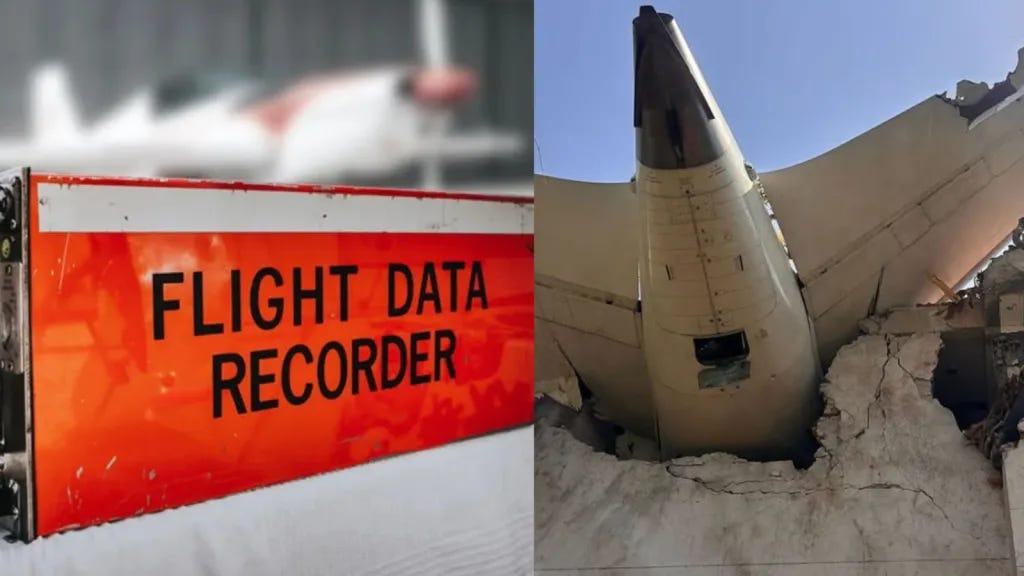Black Box Data Extracted in Air India Crash Investigation: What It Reveals So Far
In a major breakthrough, investigators have successfully retrieved and downloaded data from the black boxes of the Air India Boeing 787 Dreamliner that tragically crashed on June 12, 2025, shortly after takeoff from Ahmedabad. The crash resulted in the loss of 260 lives, making it one of the deadliest aviation accidents in India in recent years.
With the Cockpit Voice Recorder (CVR) and Flight Data Recorder (FDR) now in hand, the Aircraft Accident Investigation Bureau (AAIB) has begun reconstructing the final moments of the flight to determine the root cause of the crash.
What the Black Boxes Reveal
The black boxes are essential to any aviation accident investigation. They contain:
Cockpit conversations between pilots and air traffic control
Flight metrics such as altitude, airspeed, engine performance, and control inputs
Alerts and warnings received in the cockpit during the flight
The initial analysis of the data is expected to clarify whether the crash was caused by technical failure, pilot error, or external factors such as weather or bird strikes.
Possible Causes Under Review
While the final report is still months away, officials have confirmed they are reviewing several key possibilities:
Dual engine malfunction during initial climb
Autopilot system response and manual overrides
Emergency equipment deployment, such as the ram air turbine (RAT)
Pilot decision-making and crew coordination during crisis moments
The aircraft reportedly sent distress signals seconds before losing contact with air traffic control, raising questions about whether the crew had sufficient time to attempt recovery.
AAIB and Global Collaboration
India’s AAIB is working closely with international aviation safety bodies, including the U.S. National Transportation Safety Board (NTSB) and Boeing representatives. The black box data is being analyzed in New Delhi’s newly modernized aviation lab, which is equipped for high-speed data decoding and acoustic analysis.
Experts have emphasized that this is the first Indian crash involving the Boeing 787 Dreamliner platform, raising the stakes for both regulatory authorities and manufacturers.
Regulatory Actions and Industry Repercussions
In response to the crash:
The Directorate General of Civil Aviation (DGCA) has launched a full-scale audit of Air India’s maintenance practices and crew scheduling protocols.
All Dreamliner aircraft operating under Indian carriers are undergoing comprehensive safety checks.
Air India has been instructed to submit updated compliance reports, especially regarding engine health monitoring and emergency training procedures.
This incident may also impact how India regulates long-haul aircraft operations, especially for carriers managing large, aging fleets.
What Happens Next?
The AAIB is expected to release a preliminary investigation report by September 2025, which will include factual findings from the flight data, an initial safety analysis, and potential recommendations for systemic improvements.
A final report, complete with cause analysis and proposed aviation reforms, may follow in early 2026.
Conclusion
The successful extraction of black box data marks a crucial step in the ongoing investigation into the Air India crash. As authorities piece together the final moments of Flight AI-267, the findings are likely to have far-reaching implications for India’s aviation industry, aircraft maintenance protocols, and passenger safety standards.




